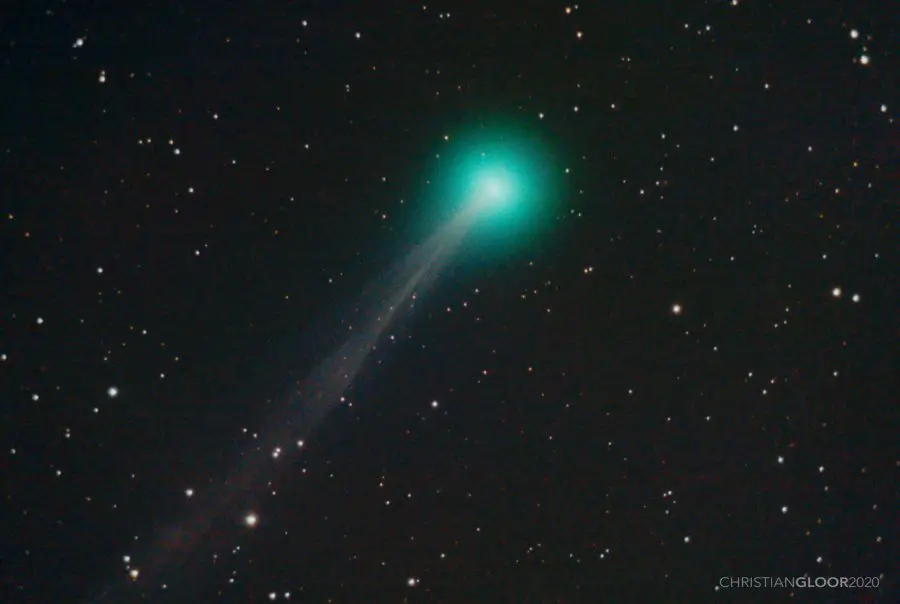Green-Tinged Comet Swan With 11 Million-Mile Tail Visible From Earth This Weekend

This weekend, much of the world will be able to witness a rare cosmological event, the passing of the “Comet Swan.” The Comet Swan and its 11 million mile long tail will be visible in the night sky for the next few days and will be visible to the naked eye. It was first discovered back in April by Australian astronomer Michael Mattiazzo. The comet has already passed the earth, but it will continue to get brighter as it approaches the sun.
It can be viewed from both the northern and southern hemispheres but will be more visible in the south.
Comet Swan is currently about 53 million miles from the Earth and is expected to be a ‘significant’ comet in terms of visibility, according to the European Space Agency. Researchers estimated that the green-tinged comet passes through the inner part of our solar system once every 11,597 years.
https://twitter.com/NASADailyImage/status/1258628909333176328
It is possible that the object could break apart as it approaches the sun, as is the case with many other comets and asteriods, including Comet ATLAS last month. In the next two weeks, Comet Swan will reach its closest point to the sun this month. If the comet survives past that point, experts predict that it will become visible once again, but next time will be viewed better in the northern hemisphere.
The original images that led to the discovery of the comet were captured by the Solar Wind Anisotropies (SWAN) instrument on the European Space Agency and NASA Solar and Heliospheric Observatory (SOHO).
According to the ESA, it is nearly impossible to predict what the comet will do, but it does seem clear that this is a once in a lifetime event.
A little closer look pic.twitter.com/YGRdEXGRFv
— Chirpy McAdams152 (@YeaIseddIt) May 13, 2020
“If the comet survives, star gazers on Earth should look for it near the bright star Capella in the constellation of Auriga, the Charioteer. This is almost certainly the only time the comet will be visible in our lifetimes: estimates are not yet fully precise, but it is clear that the comet’s orbital period is measured in thousands or even millions of years,” the ESA wrote.
Researchers have given the following schedule for best viewing of the comet.
May 15: Visible in the northern hemisphere, low on the horizon
May 17: Reaches its minimum elongation from the Sun
May 18: In Perseus and at its brightest and visible low in the northeast
May 26: Reaches its closest point to the Sun in its orbit and will move from morning to evening sky
Image Credit: Christian Gloor
Leave Comment: